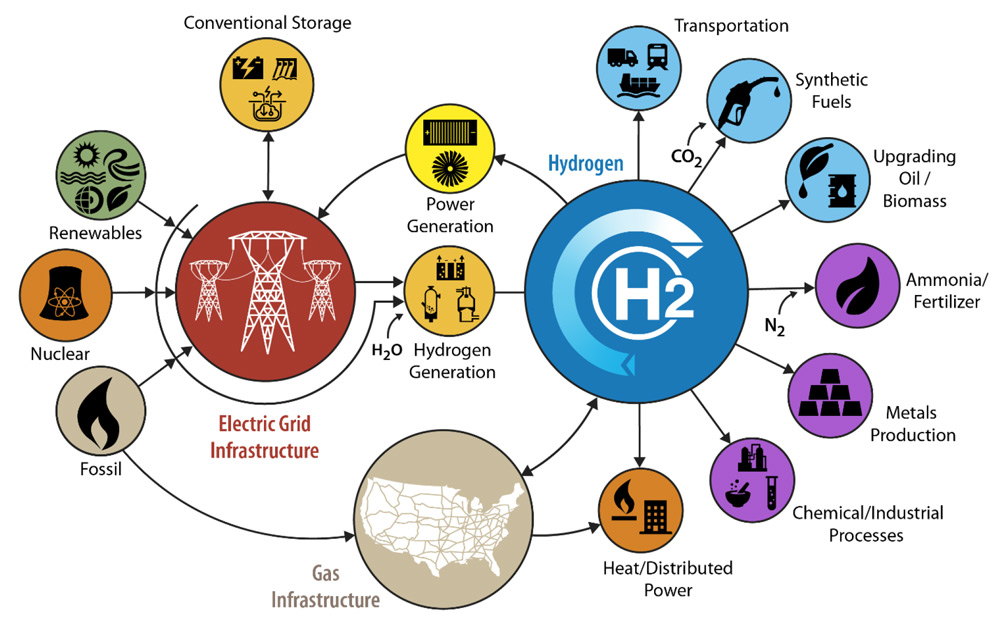In a callback to President John F. Kennedy’s 1961 speech before a joint session of Congress setting the goal to land astronauts on the moon within the decade, the Biden administration Monday announced the Energy Earthshot Initiative, a campaign to accelerate research and development of clean energy technologies.
Its first task is the “Hydrogen Shot,” a challenge to the Department of Energy, its partner research universities and the energy industry to engineer breakthroughs in hydrogen production.
“The Energy Earthshots are an all-hands-on-deck call for innovation, collaboration and acceleration of our clean energy economy by tackling the toughest remaining barriers to quickly deploy emerging clean energy technologies at scale,” Energy Secretary Jennifer Granholm said in opening DOE’s weeklong virtual conference on technologies to produce, store and use hydrogen.
The bulk of the 10 million metric tons of hydrogen produced annually in the U.S. today is created by splitting the atoms from methane, a process that also creates carbon dioxide.
The administration wants to move away from this “blue hydrogen” to “green hydrogen,” produced by removing the hydrogen from water through electrolysis using renewably generated electricity or electricity generated by nuclear power plants.

But green hydrogen is several times more expensive than the hydrogen stripped out of methane. Granholm described the “Hydrogen Shot” as an effort to reduce the cost of green hydrogen produced with renewable or nuclear energy by 80% to $1/kg by 2030. The current cost of hydrogen produced from natural gas is about $1.50/kg.
“Clean hydrogen is a game changer. It will help decarbonize high-polluting heavy-duty and industrial sectors, while delivering good-paying clean energy jobs and realizing a net-zero economy by 2050,” she said.
“We want to reduce carbon emissions by 50 to 52% by the end of this decade, produce 100% clean energy by 2035 and hit net-zero economy-wide carbon emissions by 2050,” she said.
“Those are not small goals; they are big, audacious goals, and meeting them is going to take all of us — the federal government, all 50 states, the private sector, our counterparts in other countries who have joined with us — all of us working together and scaling this capacity for science and innovation to an unprecedented level.
“Our scenario analyses suggests that we could produce five times more hydrogen than we are at current levels,” she said. “And as those numbers go up, [carbon] emissions will go down and jobs will skyrocket. Industry leaders estimate that mature hydrogen and the fuel cell industry could create $140 billion in revenue and 700,000 jobs in the United States alone.”
Granholm’s announcement also constituted an official request for information from researchers and industry by July 7 “on viable hydrogen demonstrations, including specific locations, that can help lower the cost of hydrogen, reduce carbon emissions and local air pollution, create good-paying jobs, and provide benefits to disadvantaged communities.”<!–



